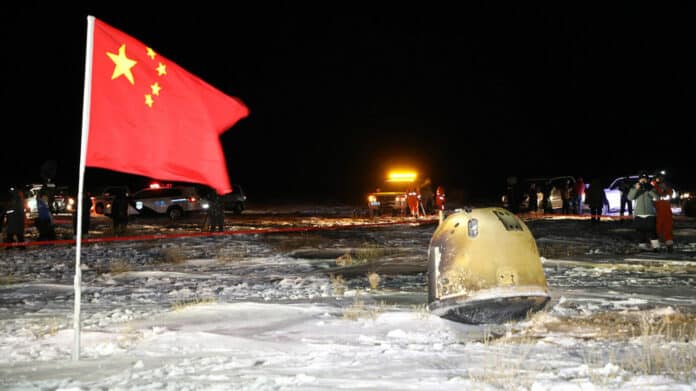Impact glasses found in lunar soils provide a possible window into the impact history of the inner solar system. However, their use for precise reconstruction of this history is limited by an incomplete understanding of the physical mechanisms responsible for their origin and distribution and possible relationships to local and regional geology.
A new study by Curtin University suggests that asteroid impacts on the Moon millions of years ago coincided precisely with some of the largest meteorite impacts on Earth.
As part of the Chinese National Space Agency’s Change-5 Lunar mission, lunar soil was transported back to Earth in December 2020. Scientists investigated microscopic glass beads that could be up to two billion years old. The glass beads were formed by the heat and pressure of meteorite impacts, and as a result, their age distribution ought to resemble the impacts, indicating a sequence of bombardments.
They combined microscopic analytical techniques, numerical modeling, and geological surveys to determine how these microscopic glass beads from the Moon formed and when. They discovered that several lunar glass bead age groups closely match the ages of some of the largest terrestrial impact crater events, such as the Chicxulub impact crater that caused the extinction of the dinosaurs.
What’s more, the study also revealed that the fact that Earth’s large impact events were not distinct but rather were preceded by a series of smaller impacts has provided new insight into the inner solar system’s asteroid dynamics, including the likelihood of potentially catastrophic Earth-bound asteroids.
Lead author Professor Alexander Nemchin, from Curtin University’s Space Science and Technology Centre (SSTC) in the School of Earth and Planetary Sciences, said, “the findings imply that the timing and frequency of asteroid impacts on the Moon may have been mirrored on Earth, telling us more about the history of the evolution of our planet.”
“The study also found that large impact events on Earth such as the Chicxulub crater 66 million years ago could have been accompanied by several smaller impacts. If this is correct, it suggests that the age-frequency distributions of impacts on the Moon might provide valuable information about the impacts on the Earth or inner solar system.”
Co-author Associate Professor Katarina Miljkovic, also from Curtin’s SSTC, said future comparative studies could give further insight into the Moon’s geological history.
“The next step would be to compare the data gleaned from these Change-5 samples with other lunar soils and crater ages to be able to uncover other significant Moon-wide impact events, which might, in turn, reveal new evidence about what impacts may have affected life on Earth.”
Journal Reference:
- Tao Long et al. Constraining the formation and transport of lunar impact glasses using the ages and chemical compositions of Change-5 glass beads. Science Advances. DOI: 10.1126/sciadv.abq2542
